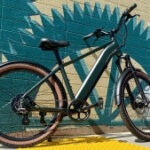In the past year, the triathlon bike market has been buzzing with exciting new releases from leading brands like Cervelo, Felt, Cube, BMC, and Quintana Roo. At usabikers.net, we’ve dedicated ourselves to thoroughly testing these latest models – building them from the ground up and putting each one through rigorous rides. Our goal? To provide you with an expert, hands-on guide to the Best Tri Bikes available right now.
While we offer in-depth reviews for many of these exceptional machines, we’ve compiled this streamlined list with ratings and key specs to simplify your search for the ideal triathlon bike. Our 2024 ratings are based on crucial factors: fit range, value, comfort, acceleration stiffness, handling tightness, stability, ease of assembly, and integrated hydration. We also provide our expert recommendation on the race distance each tri bike is best suited for.
To further assist your decision in 2024, we’ve included essential specs like the number of sizes offered and the volume of integrated hydration (where applicable).
Before diving into our top picks, take a moment to understand our rating criteria, which ensures a comprehensive and objective evaluation of each triathlon bike.
| Criteria | Description |
|---|---|
| Sizes Offered | A wider range of frame sizes enhances the likelihood of finding a bike that fits perfectly and handles optimally, though adjustments can be made by fitters. |
| Fit Range | This encompasses both the number of sizes and the span from smallest to largest, indicating the bike’s adaptability to different body types and the extent of adjustments (aerobar spacers, saddle positions) needed for an ideal fit. |
| Value | We assess the overall value proposition of the complete bike, considering componentry and frame quality, rather than just absolute price. |
| Comfort | This specifically evaluates the bike’s vertical compliance, independent of fit or handling. We consider the complete bike setup, including wheels and tires, as comfort is influenced by more than just the frame. |
| Acceleration Stiffness | This rating analyzes the bike’s responsiveness under high torque (climbing, cornering) and high wattage (powering over rollers), considering the complete build and component interplay. |
| Handling Tightness | This measures the bike’s cornering sharpness, distinct from stability. A 5/5 indicates very tight handling, while 1/5 suggests a bike that sweeps wider turns but might offer greater consistency. |
| Stability | We evaluate how stable the bike feels in aerobars, particularly in crosswinds and on descents. A more stable bike requires less rider input to maintain a straight line, considering the complete bike setup including wheels. |
| Best Distance | This is our quick recommendation for the race distance where the bike excels right out of the box. While most bikes can handle various distances, these recommendations highlight each bike’s strengths in its stock configuration. |
| Ease of Assembly | For direct-to-consumer brands, we rate how easily an average triathlete can assemble the bike at home, assuming basic mechanical skills like changing a tire but perhaps not adjusting derailleurs. |
| Integrated Hydration | This assesses the user-friendliness of the bike’s integrated hydration system, including ease of use, refilling, installation, and cleaning. |
| Volume of Integrated Hydration | For high-end triathlon bikes with integrated hydration, we note the stock volume capacity. |
It’s important to note that while the bikes featured below were provided as loaners by the respective brands, our reviews are entirely independent, driven by our testers’ unbiased evaluations, free from promotional or brand influence. Unlike many “best triathlon bike review” sites, our team at usabikers.net personally assembles and rides each bike, offering genuine, firsthand insights rather than simply paraphrasing marketing materials and spec sheets. Learn more about our rigorous gear review process here.
Cervelo P5 (2024)
$13,500 as tested, 20 lbs. 5oz. (size 56, with bottle), Shimano Dura Ace Di2 12-Speed Build, Reserve 77/88 Wheels
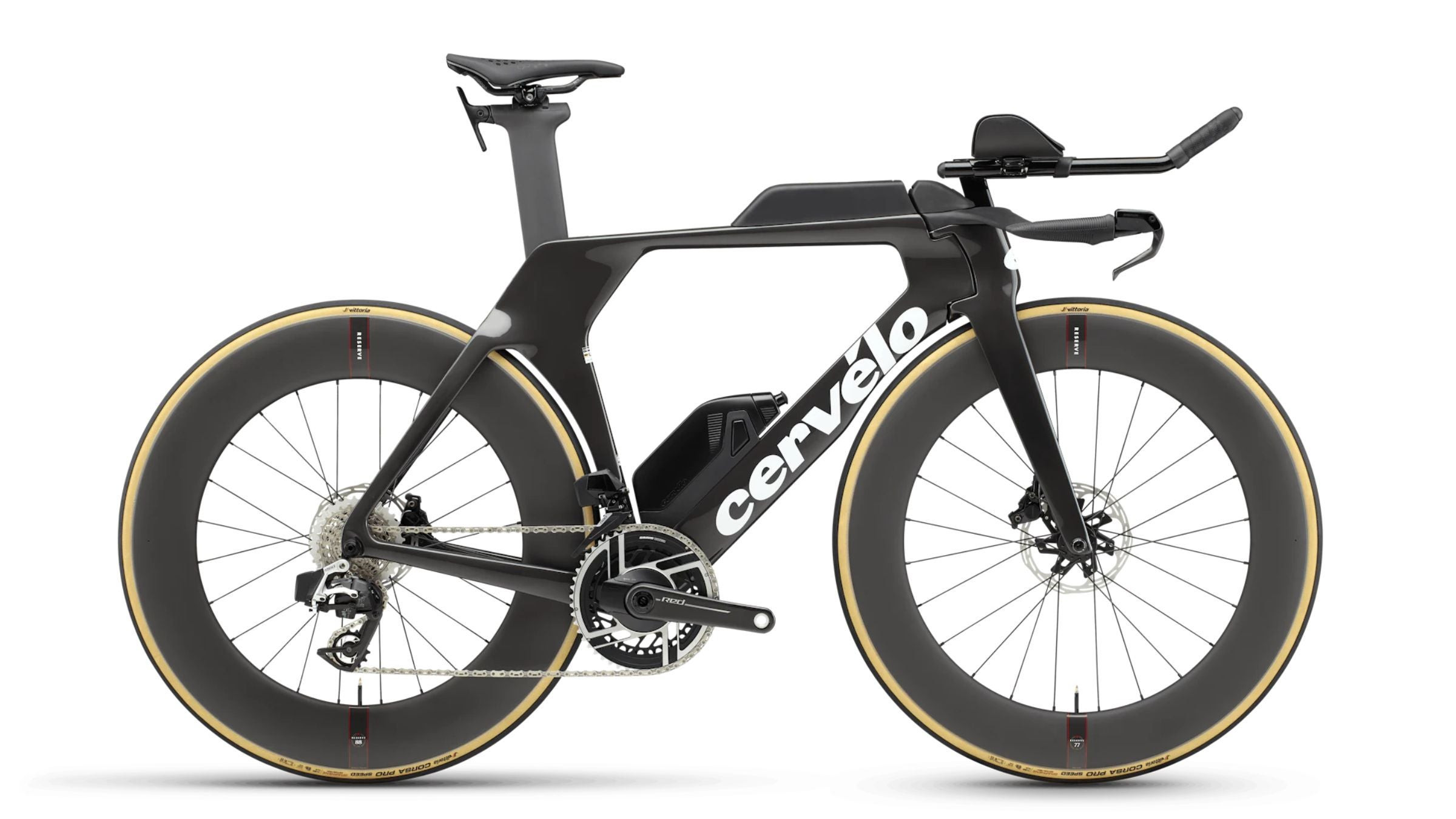 Cervelo P5 2024 triathlon bike, known for its stiffness and handling, listed as one of the best tri bikes
Cervelo P5 2024 triathlon bike, known for its stiffness and handling, listed as one of the best tri bikes
| Best Triathlon Bikes Category | Rating |
|---|---|
| Overall Rating | ★★★★ |
| Sizes Offered | 6 |
| Fit Range | ★★★★★ |
| Value | ★★ |
| Comfort | ★★★ |
| Acceleration Stiffness | ★★★★★ |
| Handling Tightness | ★★★★★ |
| Stability | ★★★ |
| Ease of Assembly | Not D2C |
| Best Distance | 70.3 and under |
| Integrated hydration | ★★ |
| Volume of Integrated Hydration | 500mL |
While the 2024 Cervelo P5 is a subtle update to its five-year-old predecessor, it remains a top contender among best tri bikes thanks to its exceptional lateral stiffness, lightweight design, and precise handling. Despite its premium price, potential buyers should factor in the need for additional hydration solutions. The P5 includes a 500mL frame-mounted bottle, impractical for mid-race refills, and a rear-mount bracket. However, the included aerobars do offer space for between-the-arms hydration systems.
Like the previous model, the 2024 P5 excels in straight-line tracking and effectively absorbs bumps. However, for long-course races with strong crosswinds, rough roads, or extended straight sections, more stable, comfortable, and aerodynamic options might be preferable. The P5’s design remains influenced by UCI regulations. That said, the updated P5 now offers a wider range of sizes and improved front-end fit flexibility. The simplified front end further enhances its best-in-class handling capabilities, making it a top choice for shorter distances where agility is key.
Read our in-depth review of the 2024 Cervelo P5.
Quintana Roo V-PRi
$13,300 as tested, 20 lbs. 12oz. (size M, with storage, integrated hydration), Shimano Dura Ace Di2 12-Speed Build, HED Vanquish Pro V62/V84 Wheels
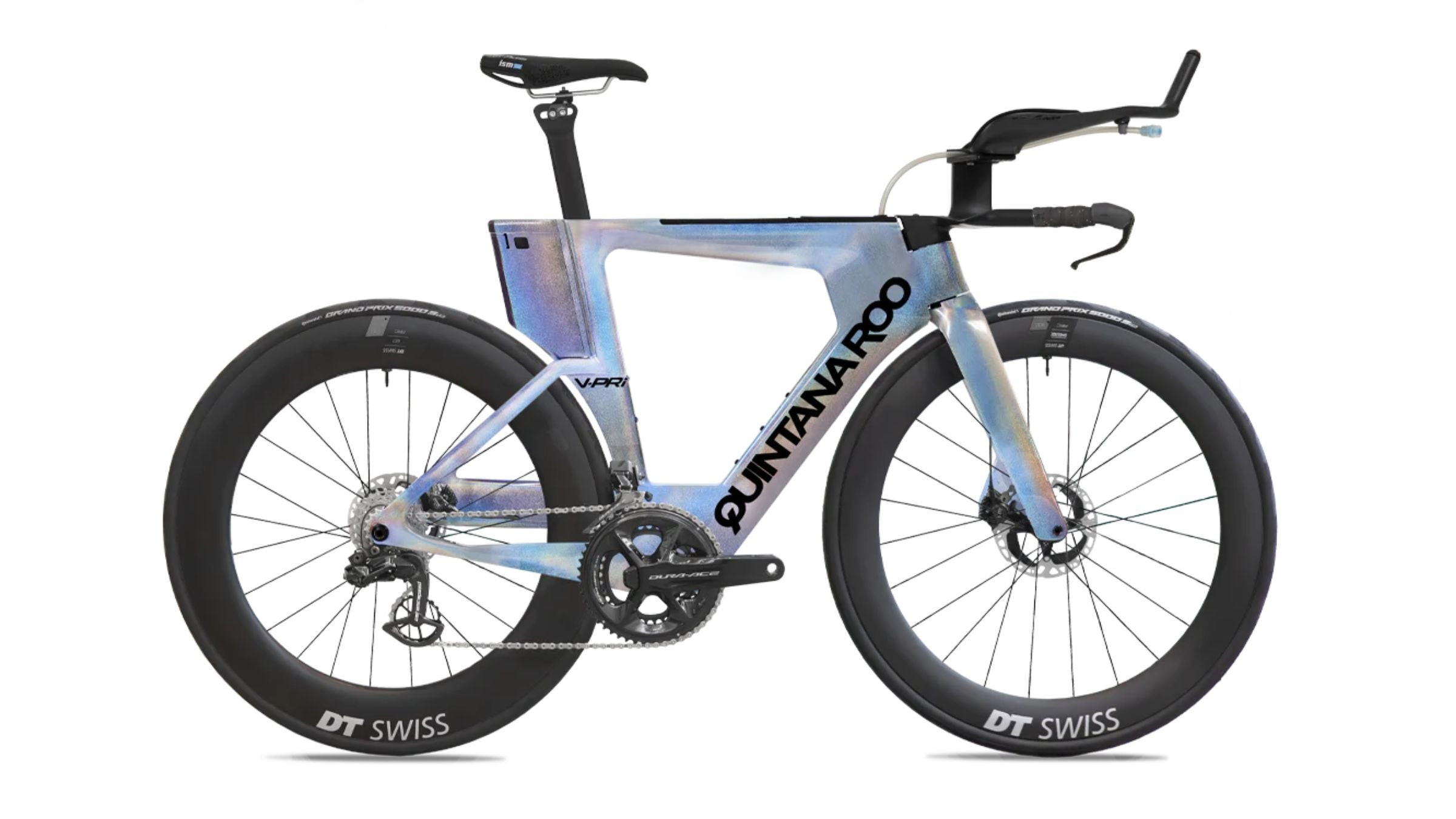 Quintana Roo V-PRI triathlon bike, praised for long-course performance and integrated hydration, featured among best tri bikes
Quintana Roo V-PRI triathlon bike, praised for long-course performance and integrated hydration, featured among best tri bikes
| Best Triathlon Bikes Category | Rating |
|---|---|
| Overall Rating | ★★★★★ |
| Sizes Offered | 3 |
| Fit Range | ★★ |
| Value | ★★★ |
| Comfort | ★★★★★ |
| Acceleration Stiffness | ★★★★ |
| Handling Tightness | ★★★★ |
| Stability | ★★★★★ |
| Ease of Assembly | ★★★★ |
| Best Distance | 70.3 and above |
| Integrated Hydration | ★★★★★ |
| Volume of Integrated Hydration | 650 mL (size S), 750 mL (size M, L) |
Quintana Roo’s new V-PRi upholds the V-PR series’ reputation as a favorite among long-course triathlon racers. It boasts exceptional straight-line tracking in diverse conditions, superior vibration damping, and high-level aerodynamics. This iteration introduces seamlessly integrated hydration, a first for Quintana Roo, with top-tier ease of use, refilling, and cleaning. Notably, the V-PRi marks a shift for Quintana Roo, offering three sizes instead of their usual six.
Assuming one of the three sizes fits you (and ample front-end fit flexibility aids in this), you’ll be hard-pressed to find a better-designed long-course machine. The V-PRi’s fully integrated hydration and nutrition, along with a clean front end, solidify its status as a fast and race-ready superbike right out of the box. While capable for Olympic-distance events, the V-PRi truly shines in all but the most technical long-course bike legs and diverse conditions. Aerobar flexibility also allows for additional hydration if needed, making it a versatile choice for serious athletes looking for the best tri bikes for long distances.
Explore our comprehensive review of the Quintana Roo V-PRi.
BMC Speedmachine 01 LTD
$17,000 as tested, 20 lbs. 2oz. (size M, with storage, integrated hydration), SRAM Red eTap AXS 12-Speed Build, ZIPP 858 NSW Wheels
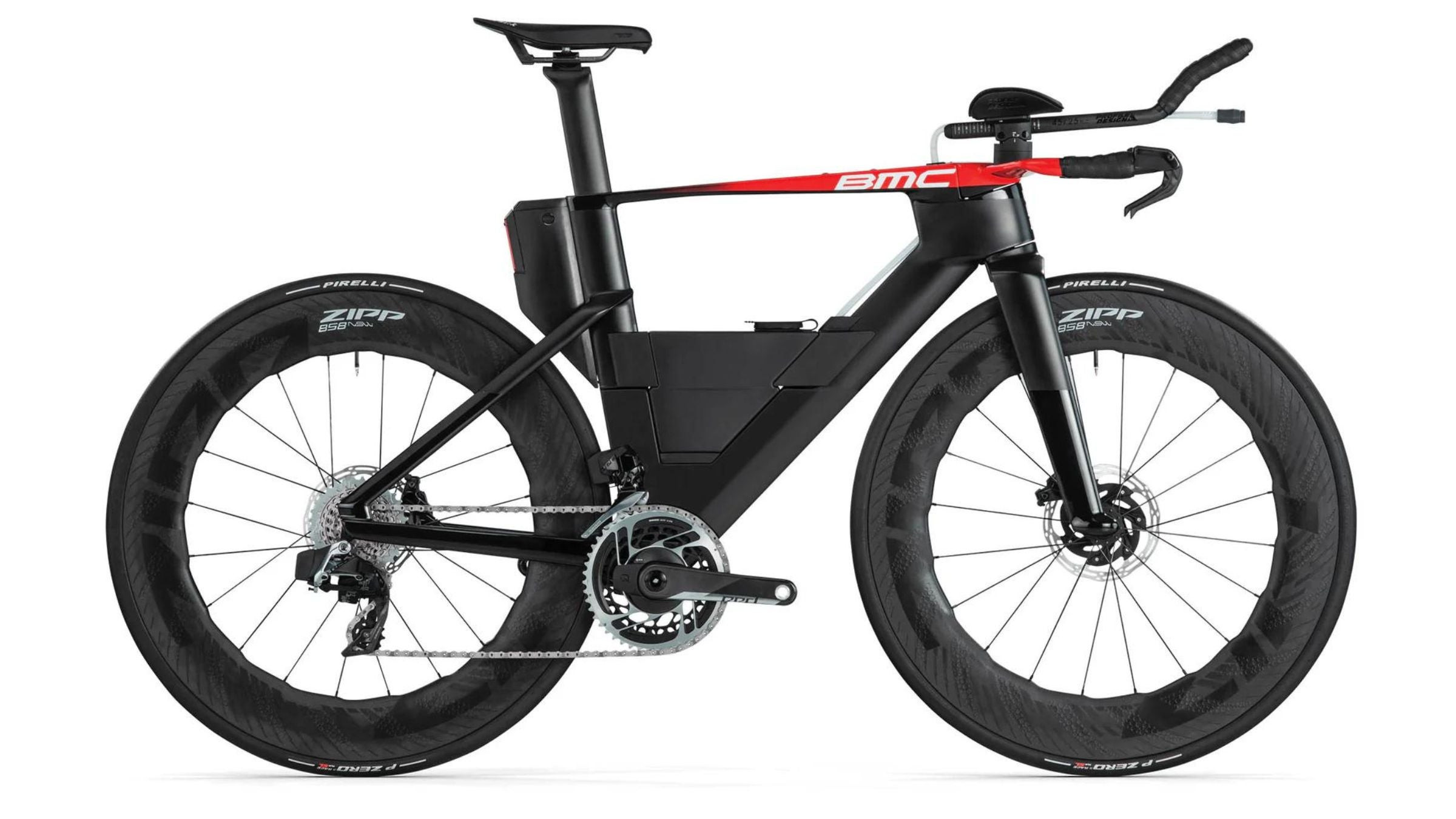 BMC Speedmachine 01 LTD triathlon bike, inspired by race cars and known for lightweight design, among the best tri bikes
BMC Speedmachine 01 LTD triathlon bike, inspired by race cars and known for lightweight design, among the best tri bikes
| Best Triathlon Bikes Category | Rating |
|---|---|
| Overall Rating | ★★★ |
| Sizes Offered | 3 |
| Fit Range | ★★ |
| Value | ★ |
| Comfort | ★★★ |
| Acceleration Stiffness | ★★★★ |
| Handling Tightness | ★★★★ |
| Stability | ★★ |
| Ease of Assembly | Not D2C |
| Best Distance | Below 70.3 |
| Integrated Hydration | ★★★ |
| Volume of Integrated Hydration | 1200 mL |
BMC’s highly anticipated Speedmachine update draws clear inspiration from race car engineering. It stands out as one of the lightest tri bikes available, barely exceeding 20 pounds with all storage included. Its unusually wide fork design is a product of collaboration with Formula 1 racing R&D. However, the race car analogy extends to the Speedmachine’s highly sensitive handling, which demands a learning curve when using aerobars, especially on descents or in crosswinds.
These characteristics make the Speedmachine potentially better suited for short-course racing or hilly, technical 70.3-distance events – unsurprising given its UCI-compliant design, similar to the Cervelo P5. On the positive side, it features a massive 1200mL “integrated hydration” bottle (more accurately, a large frame-shaped water bottle with a hose through the head tube, reminiscent of the Speedfil design). While 1200mL offers substantial onboard fluid capacity, refilling it is challenging without a built-in anti-slosh system. Unlike other superbikes with integrated nutrition, the Speedmachine lacks a built-in top-tube storage compartment but includes mounts for aftermarket add-ons.
Read more in our detailed review of the BMC Speedmachine 01 LTD.
Felt IAx
$3,700 as tested, 23 lbs. 2oz. (size 56, with storage), Shimano 105 12-Speed Build, Devox WheelRDS.A1 Wheels
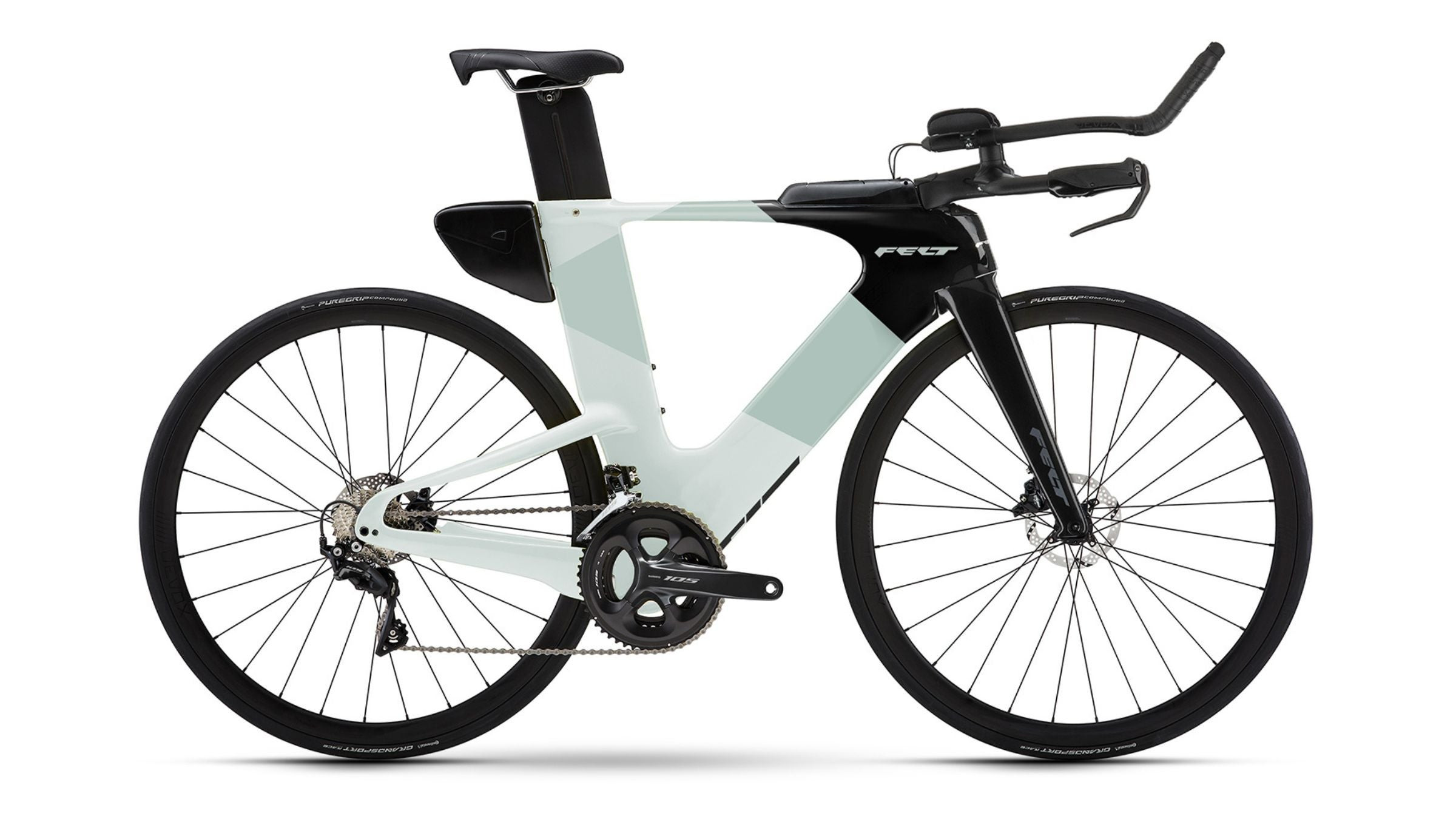 Felt iAx triathlon bike, budget-friendly with superbike features, considered one of the best value tri bikes
Felt iAx triathlon bike, budget-friendly with superbike features, considered one of the best value tri bikes
| Best Triathlon Bikes Category | Rating |
|---|---|
| Overall Rating | ★★★★ |
| Sizes Offered | 5 |
| Fit Range | ★★★★ |
| Value | ★★★★ |
| Comfort | ★★★★ |
| Acceleration Stiffness | ★★★ |
| Handling Tightness | ★★ |
| Stability | ★★★★ |
| Ease of Assembly | Not D2C |
| Best Distance | All distances |
| Integrated Hydration | None |
| Volume of Integrated Hydration | None |
Felt’s refreshed sub-$5,000 lineup introduces the new Felt IAx, packed with superbike features like deep carbon sections in the head tube, downtube, and seat tube (and seat post), along with a low seat/chainstay section for optimized airflow. Despite being among the few mechanical shifting options on our 2024 list, the Shimano 105 12-speed groupset is surprisingly comprehensive and includes hydraulic disc brakes – a rarity at this price point. This positions the Felt IAx as one of the best tri bikes for value.
While the Felt IAx is heavier than some recently tested bikes, its fundamental design makes it an excellent platform for building an all-distance race rig with significant upgrade potential. Its aerodynamic design mirrors Felt bikes costing twice as much, meaning wheel and component upgrades can elevate its performance to superbike levels. The IAx includes top-tube nutrition storage but lacks integrated hydration (common at this price). Long-course racers will likely need to add external hydration, increasing overall weight.
Discover more in our detailed review of the Felt IAx.
Canyon Speedmax CF SLX 7
$7,500 as tested, 21 lbs. 8oz. (size 56, with integrated hydration; spare tools removed), SRAM Rival eTap AXS 12-speed, DT Swiss ARC 1600 Wheels
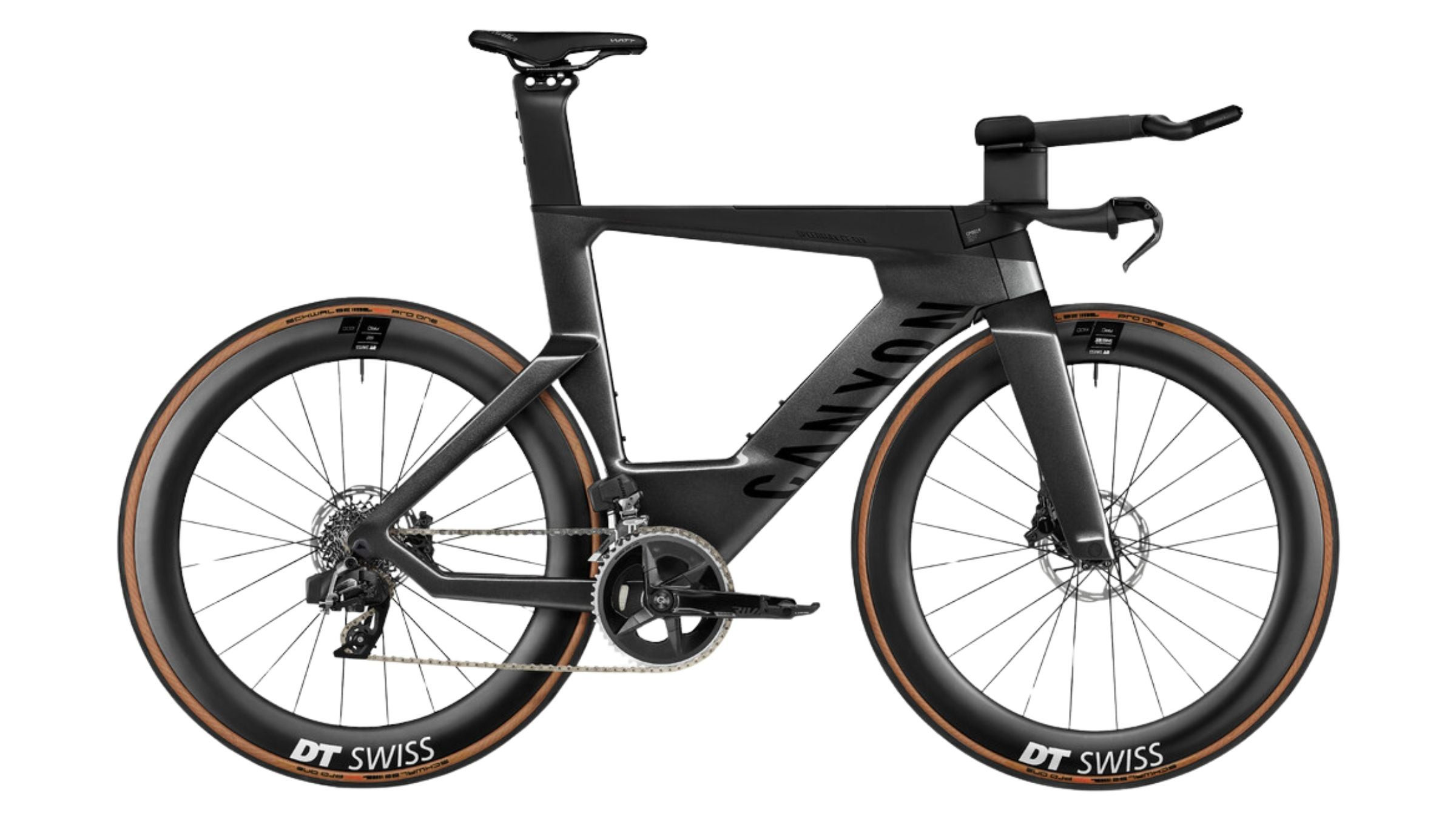 Canyon Speedmax CF SLX triathlon bike, known for its clean front end and comfortable ride, ranked among best tri bikes
Canyon Speedmax CF SLX triathlon bike, known for its clean front end and comfortable ride, ranked among best tri bikes
| Best Triathlon Bikes Category | Rating |
|---|---|
| Overall Rating | ★★★★ |
| Sizes Offered | 3 |
| Fit Range | ★★★ |
| Value | ★★★ |
| Comfort | ★★★★ |
| Acceleration Stiffness | ★★★ |
| Handling Tightness | ★★★ |
| Stability | ★★★★ |
| Ease of Assembly | ★★★★ |
| Best Distance | All distances |
| Integrated Hydration | ★★★★ |
| Volume of Integrated Hydration | 500 mL or 700 mL |
Despite minimal recent changes to Canyon’s Speedmax CF SLX line, it remains highly relevant, securing its place among the best tri bikes. It boasts one of the cleanest front ends in the triathlon bike world, minimizing wind resistance with a well-concealed hydration hose, top-tube nutrition storage, and a minimalist aerobar design. The Speedmax CF SLX is known for its comfortable ride and stable straight-line tracking, even in an aggressive aero position, effectively absorbing road vibrations and accommodating all essential triathlon gear for any distance.
However, potential Speedmax CF SLX owners should note its nutrition capacity is ample, but the frame hydration storage is limited to a maximum of 700mL (though with an excellent in-frame design). Long-course racers requiring more hydration might need to consider additional solutions. The uni-bridge aerobar design limits between-the-arms hydration options without significant modifications, potentially pushing athletes to rear-mounted storage, which can be aerodynamically disadvantageous.
Cube Aerium C:68X
$9,500 as tested, 22 lbs. 4oz. (size M, with integrated hydration), Shimano Dura-Ace Di2 12-speed, Newmen Advanced SL R.80 Streem
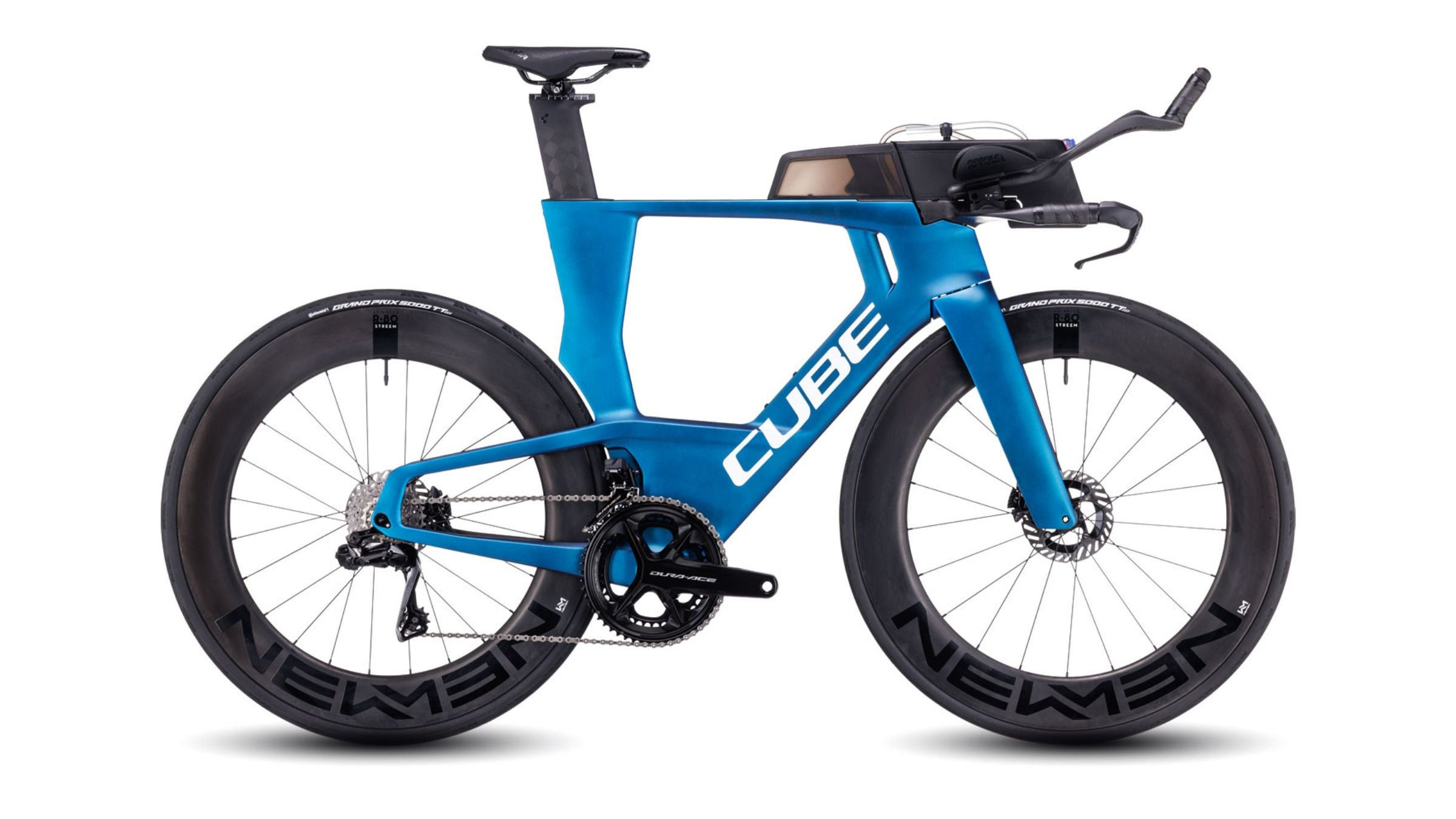 Cube Aerium C:68X triathlon bike, ridden to victory in Kona and praised for stability and value, listed as a top tri bike
Cube Aerium C:68X triathlon bike, ridden to victory in Kona and praised for stability and value, listed as a top tri bike
| Best Triathlon Bikes Category | Rating |
|---|---|
| Overall Rating | ★★★★ |
| Sizes Offered | 4 |
| Fit Range | ★★★★ |
| Value | ★★★★ |
| Comfort | ★★★★ |
| Acceleration Stiffness | ★★★ |
| Handling Tightness | ★★★ |
| Stability | ★★★★ |
| Ease of Assembly | Not D2C |
| Best Distance | All distances |
| Integrated Hydration | ★★★ |
| Volume of Integrated Hydration | 1,500 mL |
The Cube Aerium C:68X was a highly anticipated test bike, particularly after its prominent visibility in Kona, ridden to victory by Lucy Charles-Barclay for over four and a half hours. Despite its Kona success, the Cube Aerium C:68X remains relatively less accessible in the U.S. This new Cube tri bike is purpose-built for multisport, unconstrained by UCI regulations, making it a true best tri bikes contender. Its exceptional crosswind handling, straight-line stability, smooth ride, and extensive nutrition storage options make it a top-tier triathlon bike.
The Cube Aerium C:68X excels in almost every aspect. The fact that a full Shimano Dura-Ace Di2 build with high-quality 80mm race wheels is priced under $10,000 represents excellent value. In our recent tests, the Aerium ranked among the top two tri bikes overall. The only minor drawback was the in-frame hydration bladder, which required more setup and familiarization than other systems, but functioned well once properly configured. The included between-the-arms hydration system worked flawlessly from the start. It’s no surprise this well-rounded bike propelled Charles-Barclay to victory, showcasing its potential as one of the best tri bikes on the market.
Read our comprehensive review of the Cube Aerium C:68X SLT.
Cadex Tri
$7,000 frameset only, 4576g for frameset module
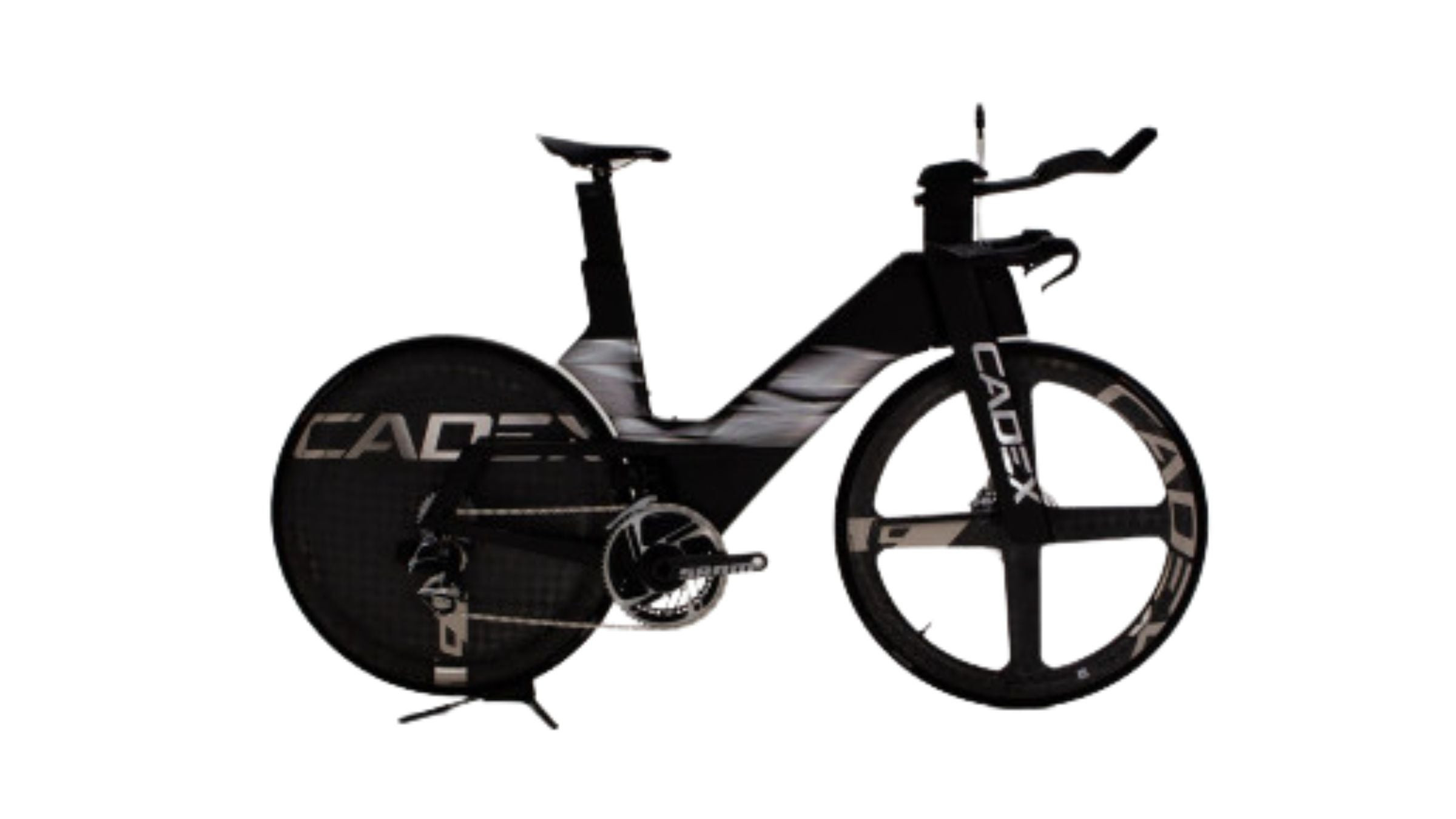 Cadex Tri frameset, a superbike with unique non-double-diamond frame, considered among the best aerodynamic tri bikes
Cadex Tri frameset, a superbike with unique non-double-diamond frame, considered among the best aerodynamic tri bikes
| Best Triathlon Bikes Category | Rating |
|---|---|
| Overall Rating | ★★★ |
| Sizes Offered | 5 |
| Fit Range | ★★★★ |
| Value | ★★★ |
| Comfort | ★★★ |
| Acceleration Stiffness | ★★★ |
| Handling Tightness | ★★★ |
| Stability | ★★★★ |
| Ease of Assembly | Not D2C |
| Best Distance | All distances |
| Integrated Hydration | ★★★★ |
| Volume of Integrated Hydration | 600-1,000 mL |
The new Cadex Tri embodies the superbike concept: prioritizing ultimate aerodynamics regardless of cost. Featuring a unique non-double-diamond frame, and an even rarer sans-top tube design, it combines a distinctive double-crown fork with horizontal seat stays to optimize airflow over the rider’s legs. The result is an incredibly fast bike on flat terrain and in low to mid-speed winds. It’s packed with triathlon-specific features favored by long-course athletes: storage for up to 10 gels, 600-1000ml of internal hydration, and an integrated toolkit, positioning it as one of the best tri bikes for aerodynamic performance.
Despite its advanced design, the Cadex Tri is surprisingly travel-friendly and easy to fit, utilizing a modular front end atop its unique fork. However, its handling predictability, ride smoothness, and cornering require some adjustment, especially for riders accustomed to traditional “diamond” frame designs. For those prioritizing speed and willing to adapt, the Cadex Tri offers unparalleled aerodynamic design and performance, solidifying its place as a top choice for speed-focused triathletes seeking the best tri bikes for pure velocity.
Read our in-depth review of the Cadex Tri bike.
A2 Bikes SP1.2
$3,500, 22lbs. 2oz. (size XL, no hydration), Ultegra Build, Vision Team 30 Wheels
 A2 Bikes SP1.2 triathlon bike, direct-to-consumer value with improved handling, considered a best value tri bike option
A2 Bikes SP1.2 triathlon bike, direct-to-consumer value with improved handling, considered a best value tri bike option
| Best Triathlon Bikes Category | Rating |
|---|---|
| Overall Rating | ★★★ |
| Sizes Offered | 4 |
| Fit Range | ★★★ |
| Value | ★★★★★ |
| Comfort | ★★★★ |
| Acceleration Stiffness | ★★★ |
| Handling Tightness | ★★★ |
| Stability | ★★ |
| Ease of Assembly | ★★★★ |
| Best Distance | All distances |
| Integrated Hydration | None |
| Volume of Integrated Hydration | None |
A2 Bikes pioneered the direct-to-consumer model, connecting triathletes directly with manufacturers, a revolutionary concept at the time. While many brands now bypass bike shops, A2 distinguishes itself with minimal marketing and overhead, aiming for rock-bottom prices. Their original Speed Phreak bike, while decent, had limitations in handling, stability, and fit flexibility. The new SP1.x line addresses these issues while maintaining affordability, making it a compelling option in the best tri bikes category for budget-conscious athletes.
The SP1.2 offers a hydraulic disc brake-equipped bike with respectable components for under $4,000, representing exceptional value. The ride quality is significantly smoother than its predecessor, with improved adjustability, particularly considering its superbike classification. However, during testing, we noted some instability in handling, with the frame exhibiting a slight wander. This might be isolated to early models, but it was present.
Feature-wise, the bike boasts strong aerodynamic pedigree, designed by former Cervelo engineer Kevin Quan’s team, the creators of the striking Diamondback Andean. It includes frame bosses for water bottles, top-tube nutrition, and Bontrager SpeedBox-compatible bosses on the seat tube rear. For triathletes seeking value without compromising on essential features, the A2 Bikes SP1.2 is a strong contender among the best tri bikes available.
Explore our detailed review of the A2 Bikes SP1.2.
Trek Speed Concept SLR 7 Gen 3
$9,500, 19lbs. 12oz. (size M, no hydration), Ultegra Di2 Build, Bontrager Aeolus Pro 51 Wheels
 Trek Speed Concept SLR 7 Gen 3 triathlon bike, now with disc brakes and IsoSpeed, considered a top all-around tri bike
Trek Speed Concept SLR 7 Gen 3 triathlon bike, now with disc brakes and IsoSpeed, considered a top all-around tri bike
| Best Triathlon Bikes Category | Rating |
|---|---|
| Overall Rating | ★★★★ |
| Sizes Offered | 4 |
| Fit Range | ★★★ |
| Value | ★★★ |
| Comfort | ★★★★ |
| Acceleration Stiffness | ★★★★ |
| Handling Tightness | ★★★★ |
| Stability | ★★★★★ |
| Best Distance | All distances |
| Integrated Hydration | ★★★ |
| Volume of Integrated Hydration | 770 mL |
After a considerable wait, Trek has integrated disc brakes into their popular Speed Concept line of tri bikes. The result is a successful update, with added features that justify the wait, though the entry price starts at $9k. Like previous Speed Concept versions, Trek delivers a refined, stable, smooth, and near-perfect triathlon bike with very few shortcomings.
A standout feature of this new iteration is the IsoSpeed coupler/suspension system, reducing high and mid-range road vibrations. While present on many Trek road bikes, its inclusion in the tri line is a welcome addition for enhanced comfort, though it lacks adjustability. While generally smooth, larger bumps could still disrupt comfort within the stable and integrated cockpit. We appreciated the built-in downtube hydration bottle (and hidden tool compartment) and found the bike equally responsive whether powering through aerobars or standing and climbing on the base bars. The Trek Speed Concept SLR 7 Gen 3 stands out as a top all-around choice in the realm of best tri bikes.
Read our extended review of the Trek Speed Concept SLR 7 Gen 3.

